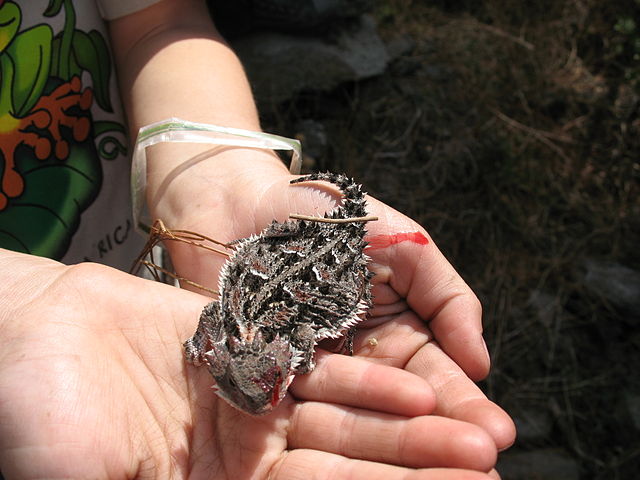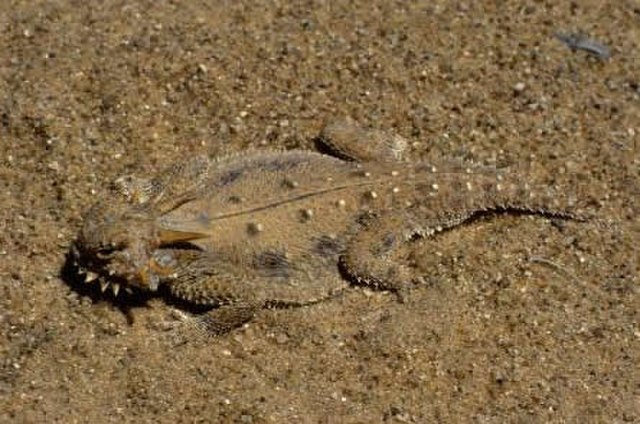Autohaemorrhaging, or reflex bleeding, is the action of animals deliberately ejecting blood from their bodies. Autohaemorrhaging has been observed as occurring in two variations. In the first form, blood is squirted toward a predator. The blood of these animals usually contains toxic compounds, making the behaviour an effective chemical defence mechanism. In the second form, blood is not squirted, but is slowly emitted from the animal's body. This form appears to serve a deterrent effect, and is used by animals whose blood does not seem to be toxic. Most animals that autohaemorrhage are insects, but some reptiles also display this behaviour.
Horned lizard exhibiting autohaemorrhaging.
A West Indian wood snake displaying autohaemorrhaging. The eyes are fully flooded with blood and some drops expelled through the mouth.
An inactive prepupa Asian ladybeetle autohaemorrhaging, resulting from cannibalism by an adult of the same species.
Anti-predator adaptations are mechanisms developed through evolution that assist prey organisms in their constant struggle against predators. Throughout the animal kingdom, adaptations have evolved for every stage of this struggle, namely by avoiding detection, warding off attack, fighting back, or escaping when caught.
Anti-predator adaptation in action: the seal shark Dalatias licha (a–c) and the wreckfish Polyprion americanus (d–f) attempt to prey on hagfishes. First, the predators approach their potential prey. Predators bite or try to swallow the hagfishes, but the hagfishes have already projected jets of slime (arrows) into the predators' mouths. Choking, the predators release the hagfishes and gag in an attempt to remove slime from their mouths and gill chambers.
Fruit bats forage by night to avoid predators.
Camouflage illustrated by the flat-tail horned lizard, its flattened, fringed and disruptively patterned body eliminating shadow
Kallima inachus masquerading as a dead leaf







